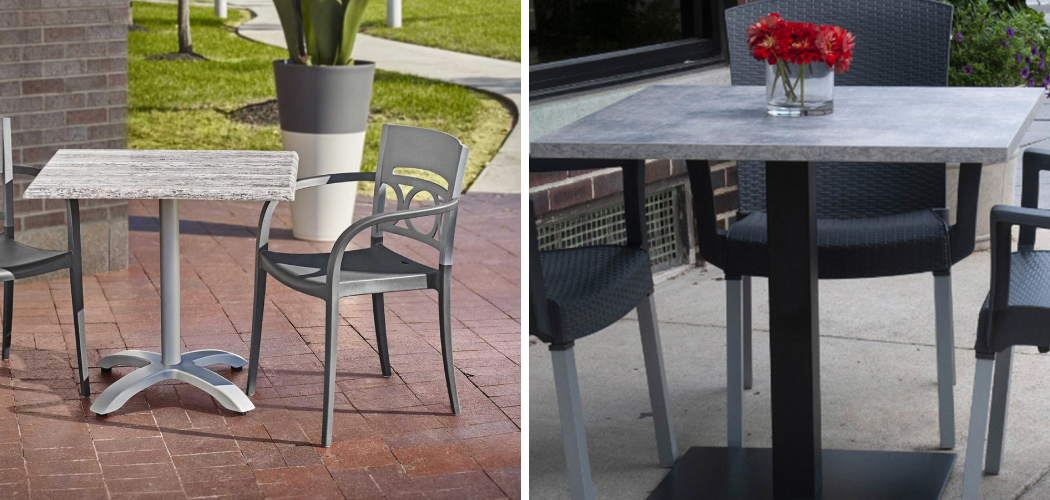Repairing a melamine table top is a practical solution to restore the functionality and aesthetics of a damaged surface. Melamine, known for its durability and resistance to scratches and stains, is a popular material for table tops in homes and commercial settings. This article aims to provide a comprehensive guide on how to repair melamine table top.
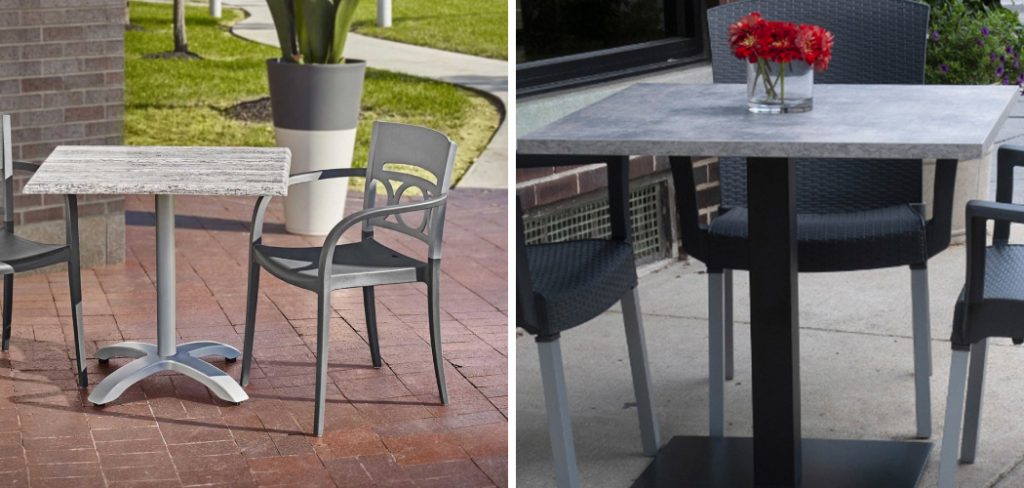
However, accidents happen, and chips, scratches, or burns may occur over time, detracting from the table’s appearance. Fortunately, repairing a melamine table top is a straightforward process that can be done with simple tools and materials. From filling in chips and scratches with repair kits or epoxy to covering burns with laminate patches, there are various techniques to address common issues. This article will provide a comprehensive guide on how to repair a melamine table top, offering step-by-step instructions, practical tips, and expert advice to help you restore your table’s beauty and functionality with ease.
Importance of Repairing Melamine Table Tops
Repairing melamine table tops is crucial for several reasons. First and foremost, it helps maintain the table’s aesthetic appeal. A pristine surface adds to the overall ambiance of a room, while a damaged one can be an eyesore. Beyond aesthetics, repairing damages like chips and scratches can prevent further deterioration. Small imperfections, if left unchecked, can expand over time, leading to more significant issues that could compromise the table’s structural integrity.
10 Methods How to Repair Melamine Table Top
1. Assessing the Damage
Before attempting to repair a melamine table top, it’s essential to assess the extent of the damage and identify the type of repair needed. Melamine is a type of laminate material that is commonly used for tabletops due to its durability and resistance to stains and scratches.
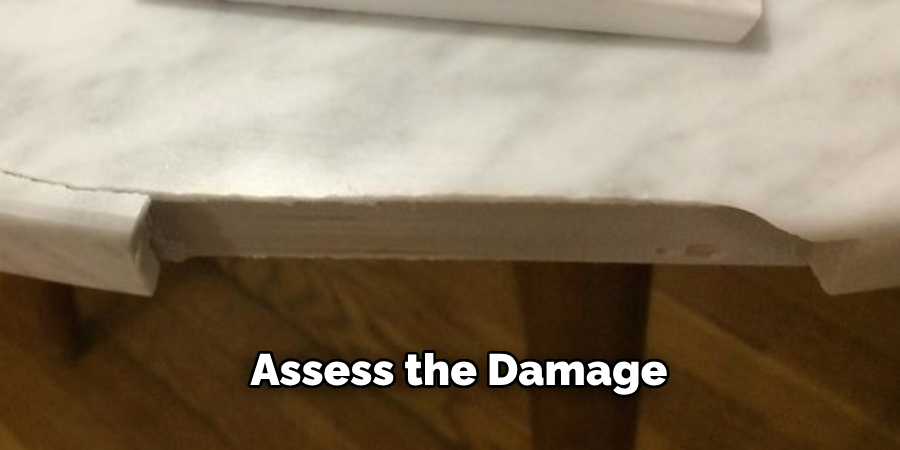
However, it can still become damaged over time, with issues such as chipping, scratching, or peeling occurring. Begin by thoroughly examining the table top to identify any areas of damage, taking note of the size, location, and severity of each issue. This assessment will help guide your repair approach and ensure that you address all necessary repairs effectively.
2. Filling Chips and Gouges
One common issue with melamine table tops is chipping or gouging, which can leave unsightly marks and compromise the integrity of the surface. To repair small chips and gouges, use a two-part epoxy filler specifically designed for use on melamine surfaces. Mix the epoxy according to the manufacturer’s instructions and apply it to the damaged areas using a putty knife or applicator tool.
Smooth the epoxy evenly over the surface of the chip or gouge, filling it completely. Allow the epoxy to dry thoroughly before sanding the repaired areas with fine-grit sandpaper to blend them with the surrounding surface. This method effectively fills in chips and gouges, restoring the smooth appearance of the melamine table top.
3. Repairing Scratches and Scuffs
Scratches and scuffs are another common issue that can detract from the appearance of a melamine table top. Fortunately, minor scratches and scuffs can often be repaired using simple DIY methods. Begin by cleaning the scratched area with a mild detergent and warm water to remove any dirt or debris.
Then, use a melamine repair pen or touch-up marker in a color that matches the table top to fill in the scratched area. Apply the marker in thin, even layers, building up the color gradually until the scratch is no longer visible. Once the marker has dried, buff the repaired area with a soft cloth to blend it with the surrounding surface. This method provides a quick and easy way to repair minor scratches and scuffs on a melamine table top.
4. Replacing Damaged Edging
In some cases, the edging or banding of a melamine table top may become damaged or come loose over time. To repair or replace damaged edging, start by carefully removing the old edging using a heat gun or hair dryer to soften the adhesive. Once the old edging has been removed, clean the exposed edge of the table top thoroughly to remove any residue or debris. Cut a new piece of melamine edging to the same length as the damaged section, ensuring that it matches the color and texture of the existing table top.
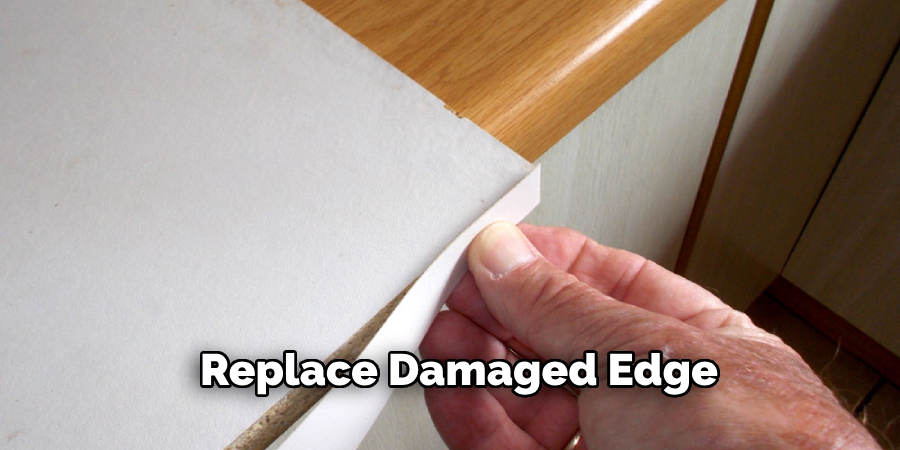
Apply a thin layer of contact cement to both the table top edge and the back of the new edging, then press the edging firmly into place. Use a roller or clamps to ensure a secure bond, and allow the adhesive to dry completely before using the table. This method effectively repairs or replaces damaged edging, restoring the appearance and integrity of the melamine table top.
5. Addressing Heat Damage
Melamine table tops are resistant to heat, but they can still become damaged if exposed to high temperatures or direct heat sources. Heat damage may manifest as discoloration, bubbling, or warping of the surface. To repair heat damage on a melamine table top, start by gently sanding the affected area with fine-grit sandpaper to remove any surface imperfections or discoloration.
Clean the sanded area thoroughly with a mild detergent and warm water, then allow it to dry completely. Once dry, apply a melamine repair compound or filler to the damaged area, following the manufacturer’s instructions for application and drying time.
6. Preventing Peeling Edges
Peeling edges are a common issue with melamine table tops, especially along the edges and corners where the laminate may become detached from the substrate. To prevent peeling edges and reinforce the bond between the laminate and the substrate, apply a bead of clear silicone caulk along the edges of the table top. Use a caulking gun to apply a thin, even bead of caulk along the entire perimeter of the table top, ensuring that it forms a tight seal between the laminate and the substrate. Smooth the caulk with a damp cloth or your finger to remove any excess and create a clean, finished edge. Allow the caulk to dry completely before using the table.
7. Refinishing the Surface
If the damage to the melamine table top is extensive or if you simply want to give it a fresh new look, refinishing the surface may be the best option. Begin by thoroughly cleaning the table top with a mild detergent and warm water to remove any dirt, grease, or debris.
Once the surface is clean and dry, sand the entire table top lightly with fine-grit sandpaper to create a smooth, roughened surface for better adhesion of the new finish. Wipe the surface clean with a tack cloth to remove any sanding dust, then apply a melamine primer or bonding primer to the entire table top using a brush or roller. Once the primer has dried, apply multiple thin coats of melamine paint or laminate paint, allowing each coat to dry completely before applying the next.
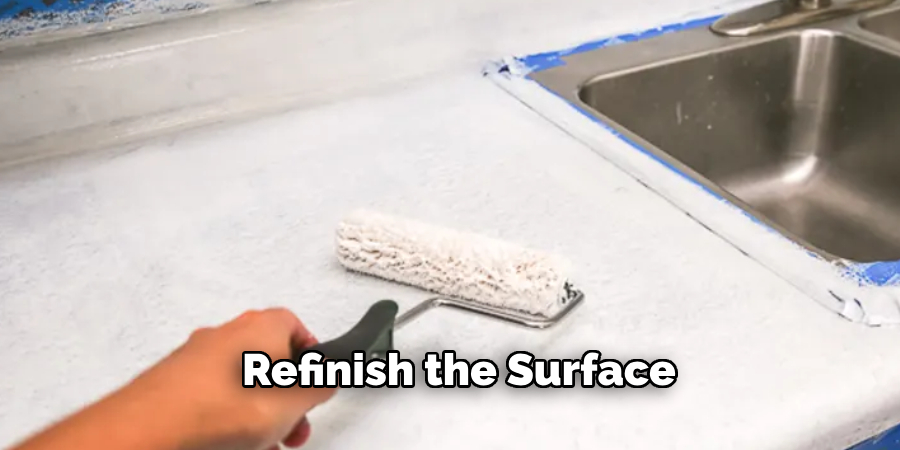
8. Using Repair Kits
Repair kits specifically designed for melamine surfaces are available and can be an effective solution for addressing minor damage and imperfections. These kits typically include everything you need to repair scratches, chips, and other surface damage, including filler compounds, touch-up markers, and finishing products. Follow the instructions included with the repair kit carefully to achieve the best results. Clean the damaged area thoroughly, apply the filler or touch-up marker as directed, and finish with the provided sealant or topcoat. Repair kits are a convenient and cost-effective option for repairing minor damage to melamine table tops and restoring their appearance.
9. Seeking Professional Help
If you’re unsure how to repair damage to a melamine table top or if the damage is extensive, consider seeking professional help. Furniture repair specialists, cabinetmakers, or carpenters with experience working with melamine surfaces can assess the damage and recommend appropriate repair methods. They have the tools, materials, and expertise to address a wide range of issues and restore the appearance and functionality of the table top effectively. While professional services may incur additional costs, they can save you time and frustration by ensuring that the repairs are done correctly and the table top is restored to its original condition.
10. Preventative Maintenance
Once you’ve repaired the damage to your melamine table top, it’s important to take steps to prevent future damage and maintain its appearance and functionality. Avoid placing hot pots, pans, or dishes directly on the table top, as this can cause heat damage. Use heat-resistant trivets or coasters to protect the surface from heat-related issues. Additionally, use cutting boards and placemats to prevent scratches and gouges from utensils and dishes. Clean the table top regularly with a mild detergent and warm water, avoiding harsh abrasives or chemical cleaners that can damage the surface. Wipe up spills promptly to prevent staining or water damage.
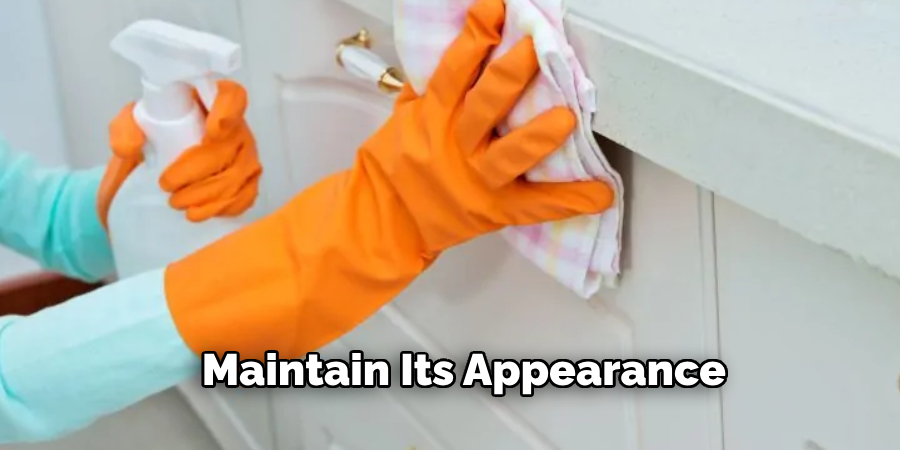
Conclusion
In conclusion, repairing a melamine table top requires careful assessment of the damage and appropriate selection of repair methods. Whether addressing chips, scratches, peeling edges, or heat damage, there are various techniques and products available to effectively restore the appearance and functionality of the table top. From filling chips and gouges to refinishing the surface, each method offers a solution to common issues encountered with melamine surfaces. Thanks for reading, and we hope this has given you some inspiration on how to repair melamine table top!
